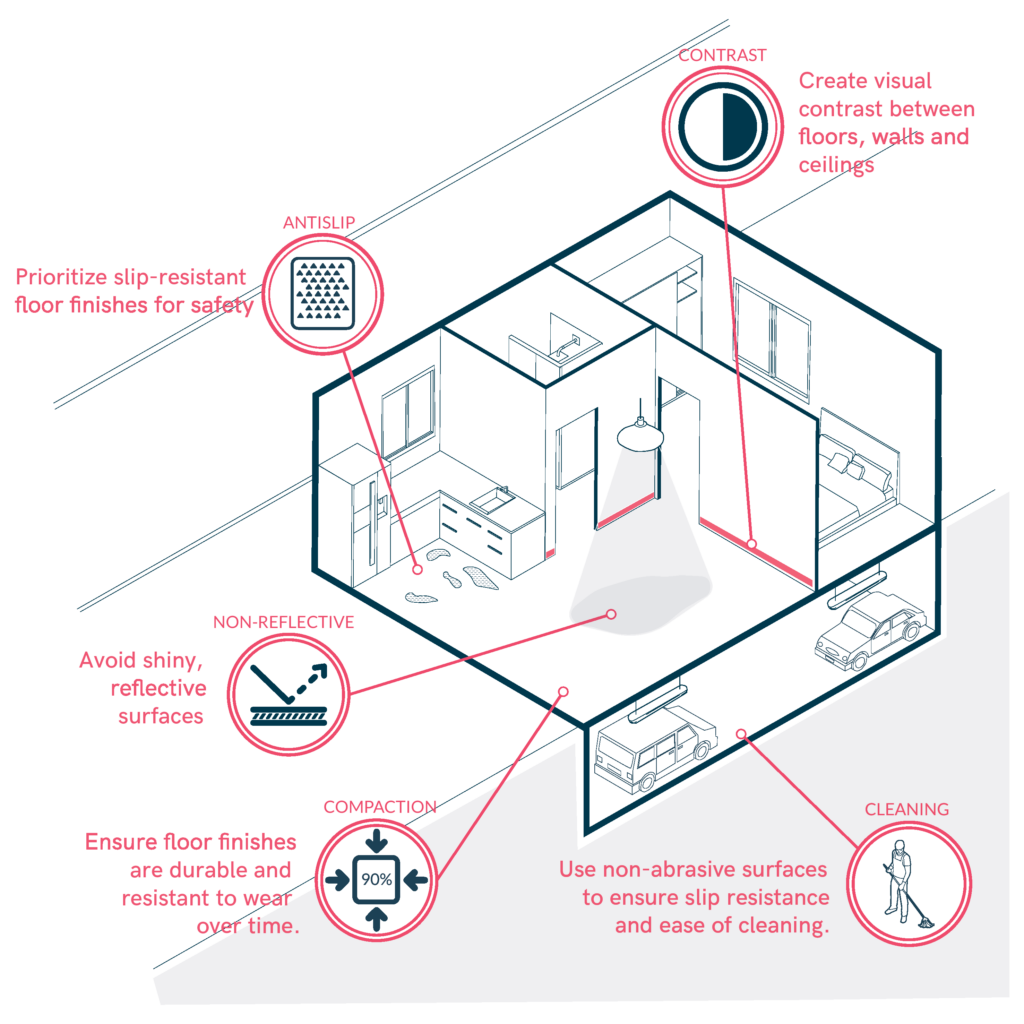Surface Finishes
Surface finishes must prioritize safety and accessibility for all users. Slip-resistant materials, visual contrasts, and non-reflective finishes help prevent accidents and enhance navigation. These finishes support people with mobility or visual impairments, ensuring comfort and usability. Durable, easy-to-clean finishes further contribute to a safe, long-lasting environment.

- Prioritize slip-resistant floor finishes for safety, particularly in high-traffic and wet areas.
- Avoid directional floor finishes like deep-pile carpets, which hinder mobility aids.
- Ensure floor finishes are durable, easy to clean, and resistant to wear over time.
- Create visual contrast between floors, walls, and ceilings to assist individuals with visual difficulties.
- Avoid shiny, reflective surfaces that can cause glare and disorientation, particularly in large areas.
- Use non-abrasive, comfortable surfaces for wet rooms to ensure slip resistance and ease of cleaning.
- In kitchens, ensure floors are slip-resistant even when contaminated with grease or spills.
Sources
- https://accessible-eu-centre.ec.europa.eu/content-corner/digital-library/en-172102021-accessibility-and-usability-built-environment-functional-requirements_en
- https://breeam.es/
- https://www.usgbc.org/leed
- https://evalore.es/servicio/certificaciones-medioambientales/
- https://www.codigotecnico.org/pdf/Documentos/SUA/DccSUA.pdf
- https://universaldesign.ie/built-environment/building-for-everyone/building-for-everyone-full-series
- Carers
- Children
- Cognitive
- Cognitive abilities
- Decolonial perspective
- Digital
- Digital barrier
- Enviroment
- Environmental
- Gender and generations
- Gender perspective
- Hearing impairment
- Low-education
- Low-income
- Older people
- Other
- Physical abilities and features
- Sensory and Physical
- Socioeconomic
- Visual impairment